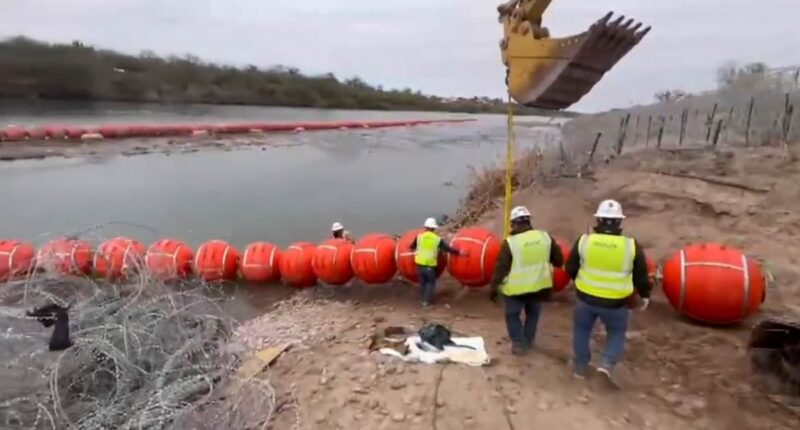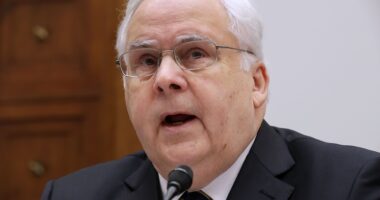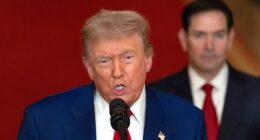
Shortly after President Donald Trump’s reinauguration, Texas intensified its border security efforts by adding more floating barriers along the Rio Grande.
Governor Greg Abbott of Texas shared a video showing the installation of these substantial buoys at the Texas-Mexico border, with the goal of discouraging illegal border crossings.
‘I look forward to continuing to work closely with President Trump to secure the border,’ Abbott declared on X/Twitter, adding, ‘AMERICA IS BACK!’
These floating barriers are part of Texas’s contentious border enforcement program, sparking legal and political disputes. In 2023, the Biden Administration filed a lawsuit against Texas, contending that the barriers breached federal laws.
While a district court initially ruled in favor of the federal government, the Fifth Circuit Court of Appeals overturned that decision, allowing Texas to expand the use of the buoys.
In November, Abbott announced plans to extend the barriers near Eagle Pass, a hotspot for migrant crossings, and now with Trump back in the White House, the governor is doubling down on his border security measures.
It comes after White House border czar Tom Homan said Tuesday that President Donald Trump’s mass deportation has begun as U.S. Immigration and Customs Enforcement officers can now arrest illegal immigrants in churches and schools.
Governor Abbott, a staunch ally of President Trump, wasted no time in expressing his support for the new administration.
On Monday, Abbott shared a letter addressed to Trump, congratulating him on his inauguration and urging further action on the border crisis.
‘Texas has fought to secure the border in the face of federal obstruction,’ Abbott wrote.
‘I look forward to ending this crisis with your help.’
During a speech on Monday, President Trump praised Abbott’s efforts, calling him a ‘strong leader’ in the fight to secure America’s borders.
Now back in office, President Trump is set to sign a series of executive orders aimed at cracking down on illegal immigration.
Among the measures is a directive to Homeland Security and the Department of Defense to resume construction of the border wall – one of Trump’s signature policies during his first term.
Trump also pledged to send troops to the southern border, though immigration lawyers have pointed out that military personnel are not permitted to make arrests.
Additionally, the president is set to formally designate Mexican drug cartels as foreign terrorist organizations, a move that could escalate efforts to combat cross-border crime.
The reinstallation of the buoys comes after Trump signed an executive order that aims to end birthright citizenship – a move that Abbott said he would back.
But several other states dubbed the order as ‘unlawful’.
‘What the president did yesterday is unlawful, unconstitutional and it will not stand,’ New Jersey Attorney General Matthew Platkin said in an interview with NPR.
‘We are a state of immigrants. Millions of people in our state have obtained their citizenship through birthright citizenship,’ Platkin said.
‘It’s the story of our state and the story of America, and it’s enshrined in our [U.S.] Constitution for a reason.’
The reinstallation of floating barriers is likely to reignite tensions over border security.
Critics argue that the buoys are inhumane and ineffective, while supporters say they are a necessary deterrent to protect Texas communities.
The Biden Administration had opposed the use of the buoys, claiming they posed environmental risks and violated international treaties with Mexico.
Abbott, however, dismissed these concerns, framing the barriers as essential to combating what he has repeatedly called a ‘border crisis.’
With Trump now leading the charge from Washington, Abbott appears emboldened in his efforts to expand the program.
As the new administration settles in, the fight over immigration and border security is set to dominate the political landscape once again.
With Texas pushing ahead on its controversial measures and President Trump vowing to take bold action, the stage is set for another round of heated debates over the future of America’s southern border.

















